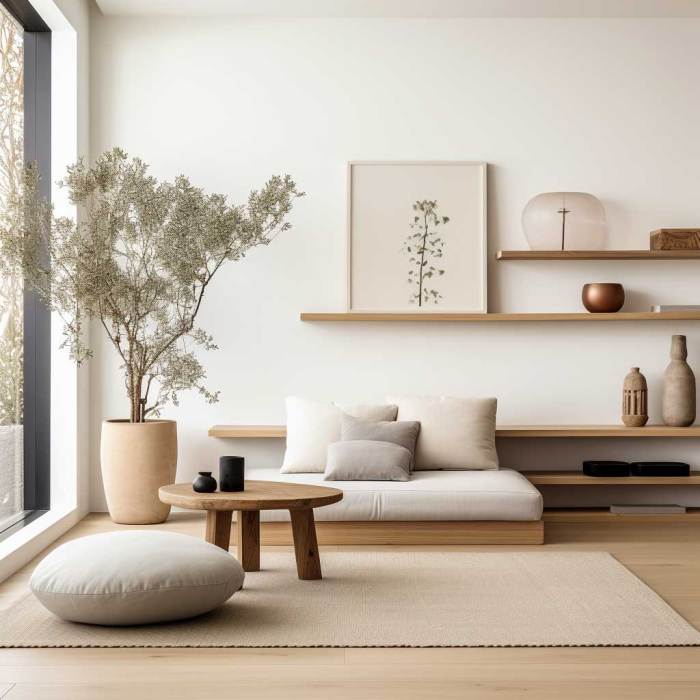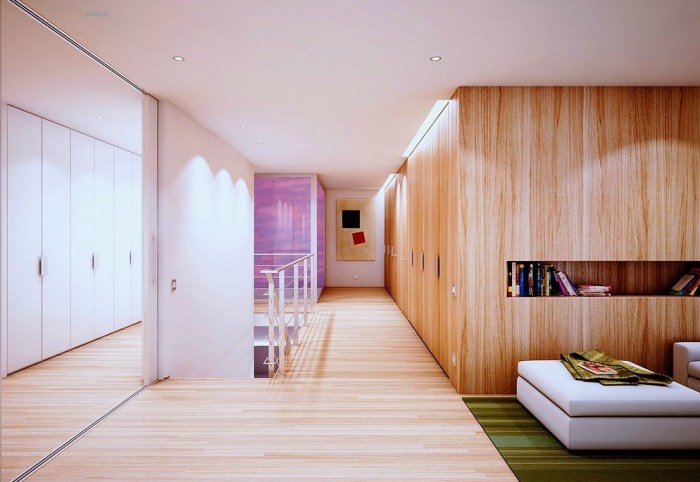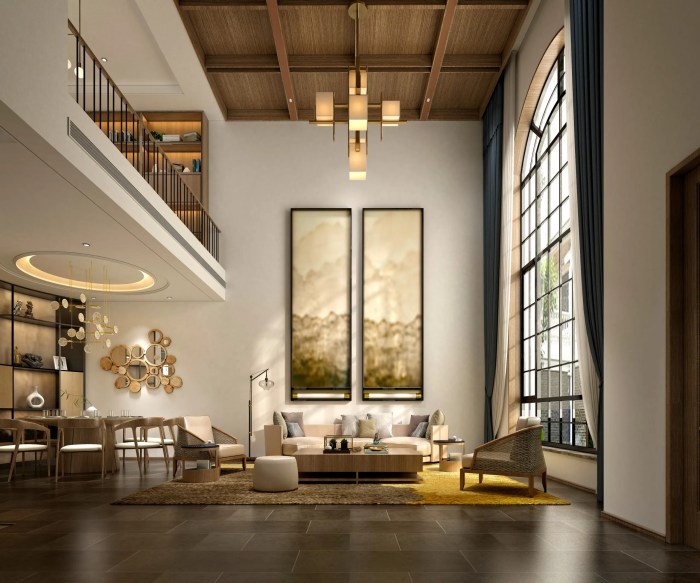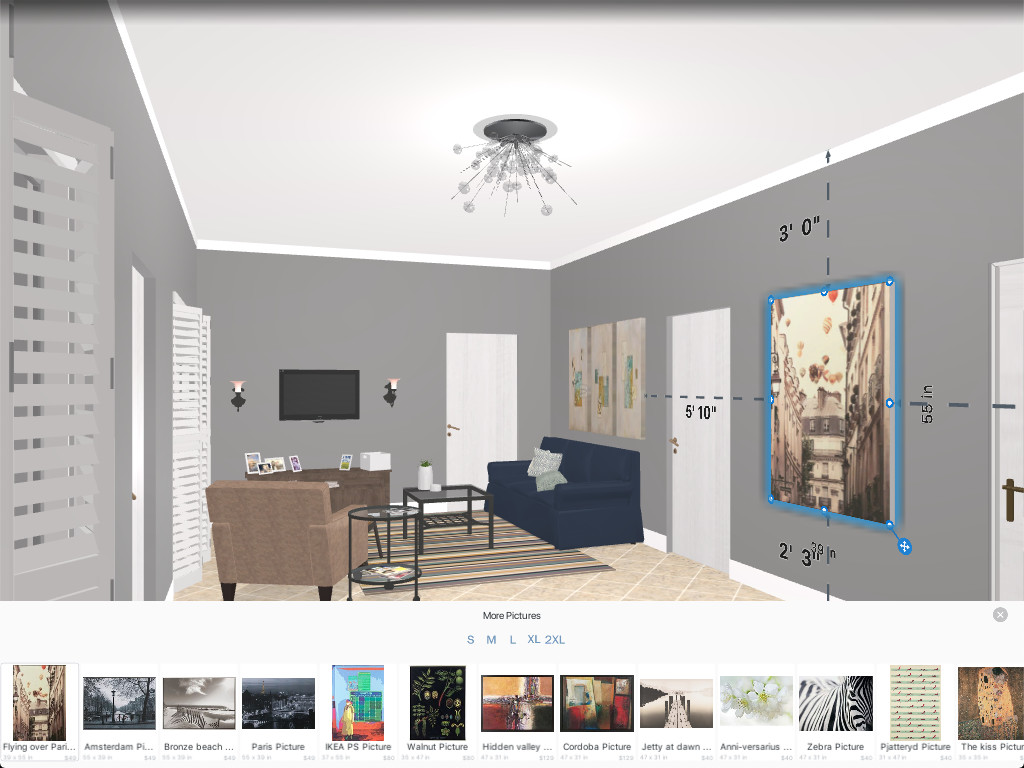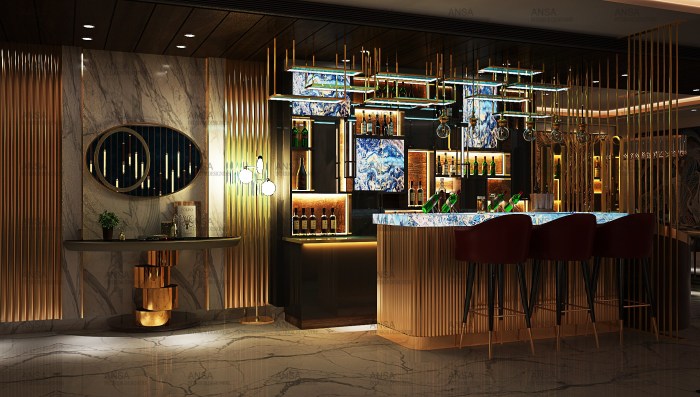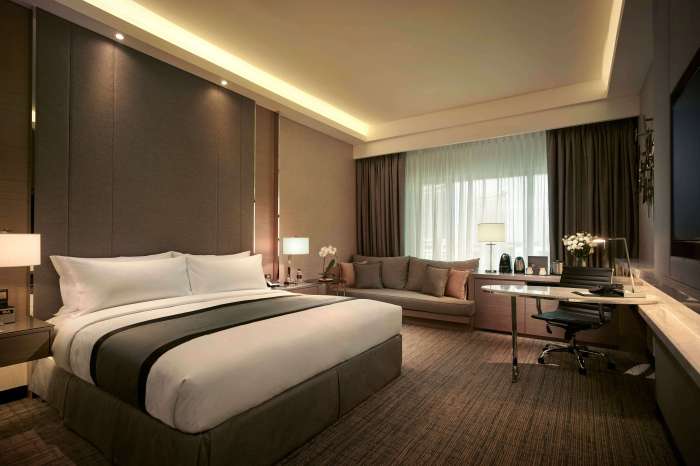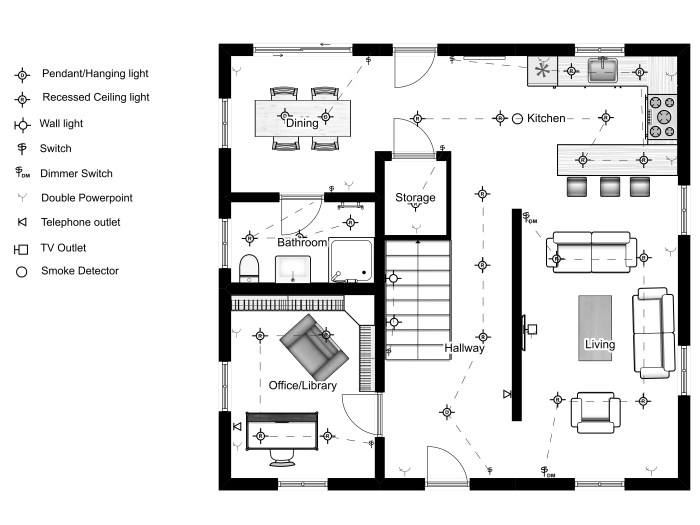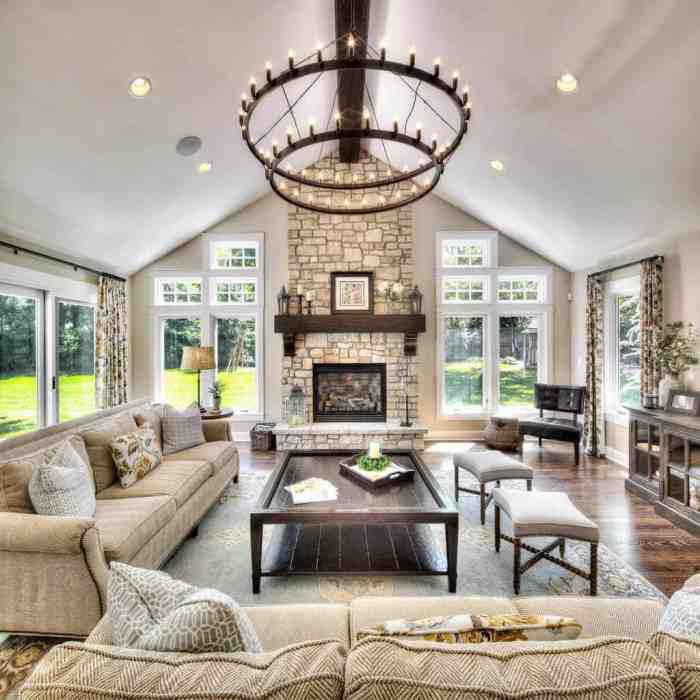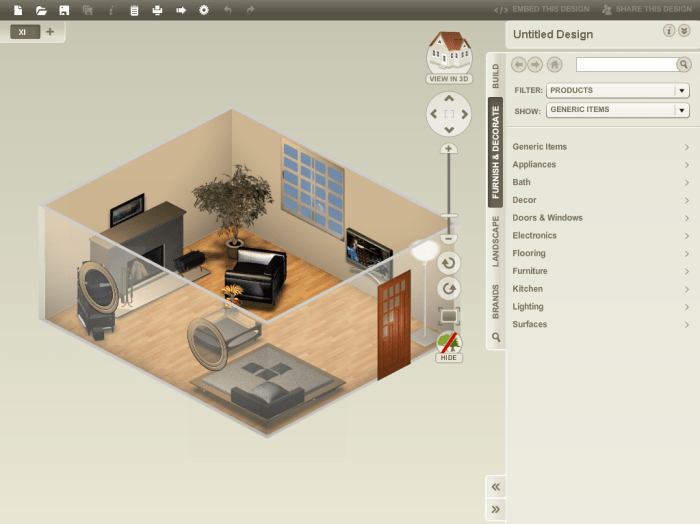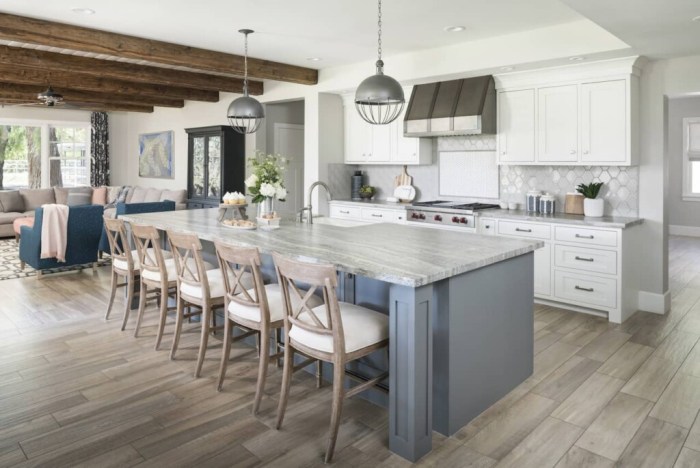Diving into the world of house interiors, we uncover the art of designing living spaces that not only look beautiful but also enhance our daily lives. From selecting the perfect color palette to maximizing space, each element plays a crucial role in shaping the ambiance of a home.
Join us on this journey as we delve into the key aspects of house interiors.
House Interiors Overview

House interiors refer to the design and layout of the inside of a home, including the furniture, decorations, colors, and overall aesthetic appeal.
Well-designed interiors play a crucial role in creating a comfortable and inviting living space. They not only enhance the visual appeal of a home but also contribute to the overall functionality and convenience of the space.
Impact on Mood and Productivity
The design of house interiors can have a significant impact on the mood and productivity of the occupants. Here's how:
- Color schemes: The choice of colors in a room can influence emotions and moods. For example, warm colors like red and orange can create a cozy and energetic atmosphere, while cool colors like blue and green can promote relaxation and calmness.
- Furniture arrangement: The layout of furniture can affect the flow and functionality of a space. A well-organized arrangement can enhance productivity by creating a conducive environment for work or relaxation.
- Natural light: Maximizing natural light in a room can boost mood and productivity. Exposure to natural light has been linked to improved focus, energy levels, and overall well-being.
- Personalization: Adding personal touches and decor items that reflect the occupants' preferences and personality can create a sense of belonging and comfort, ultimately enhancing mood and productivity.
Interior Design Elements
Interior design elements play a crucial role in creating a cohesive and aesthetically pleasing space within a house. Each element contributes to the overall look and feel of the interiors, enhancing the functionality and visual appeal of the space.
Color
Color is one of the most important elements of interior design. It sets the mood, creates an atmosphere, and can make a space feel larger or cozier. Warm colors like reds, oranges, and yellows can create a welcoming and energetic space, while cool colors like blues and greens can evoke a sense of calm and relaxation.
Neutral colors like whites, grays, and beiges provide a versatile backdrop that can be easily paired with other colors or textures.
Lighting
Lighting is another key element that can greatly impact the look and feel of a space. Natural light can brighten up a room and make it feel more spacious, while artificial lighting fixtures such as chandeliers, sconces, or lamps can create ambiance and highlight specific areas or features within the space.
Furniture
The furniture in a room not only serves a functional purpose but also contributes to the overall aesthetics of the space. The style, material, and placement of furniture can define the design style of a room, whether it's modern, traditional, minimalist, or eclectic.
Choosing the right furniture pieces that complement each other and the overall design scheme is essential for creating a harmonious interior.
Popular Interior Design Styles
When it comes to interior design, there are several popular styles that homeowners and designers often turn to in order to create a cohesive and visually appealing space. Each style has its own unique characteristics and key features that set it apart from the others.
Let's explore some of the most popular interior design styles and how they differ from one another.
Modern
The modern interior design style is known for its clean lines, sleek surfaces, and minimalistic approach. Neutral colors, such as white, black, and gray, are often used to create a sense of simplicity and sophistication. Furniture choices in modern design tend to be sleek and angular, with an emphasis on functionality and form.
Overall, modern interiors exude a sense of openness and airiness.
Minimalist
Minimalist interior design focuses on the principle of "less is more." This style embraces simplicity, clean lines, and a clutter-free environment. Neutral color palettes, simple furniture pieces, and a focus on essential elements are key features of minimalist design. The goal is to create a sense of calm and tranquility through a pared-down aesthetic.
Traditional
Traditional interior design is characterized by classic and timeless elements. Rich colors, ornate details, and elegant furnishings are hallmarks of this style. Traditional interiors often feature intricate patterns, luxurious fabrics, and antique pieces. The overall ambiance of a traditional space is warm, inviting, and sophisticated.
Bohemian
The bohemian interior design style is all about creativity, eclecticism, and a laid-back vibe. Bold colors, mix-and-match patterns, and a variety of textures are typical in bohemian spaces. Furniture choices range from vintage pieces to global-inspired finds, giving the space a well-traveled and free-spirited feel.
Bohemian interiors are cozy, welcoming, and full of personality.
Maximizing Space in House Interiors
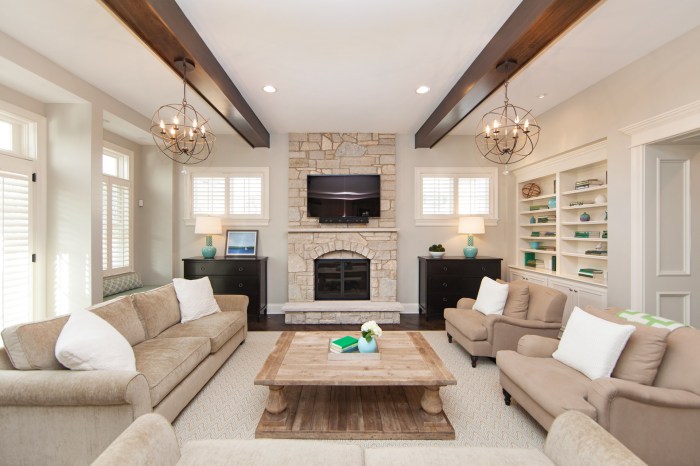
When dealing with small house interiors, maximizing space is crucial to ensure functionality and comfort. Implementing smart design choices and utilizing storage solutions can make a significant difference in creating a spacious feel even in limited areas.
Importance of Storage Solutions
Utilizing storage solutions is key to maximizing space in house interiors. Incorporating built-in cabinets, shelves, and multifunctional furniture pieces can help declutter the space and create a more organized environment. By keeping belongings out of sight, you can prevent the space from feeling cramped and chaotic.
Tips for Maximizing Space
- Utilize vertical space: Install tall shelves or cabinets to make use of the vertical space in the room.
- Opt for multifunctional furniture: Choose furniture pieces that serve multiple purposes, such as a storage ottoman or a bed with built-in drawers.
- Use light colors: Lighter shades can make a space feel larger and more open, creating an illusion of space.
- Implement mirrors: Mirrors can visually expand a room by reflecting light and creating the illusion of depth.
- Declutter regularly: Keep only essential items in the space to avoid overcrowding and maintain a clean, streamlined look.
Lighting in Interior Design
Lighting plays a crucial role in enhancing the overall look and feel of house interiors. It not only illuminates the space but also contributes to the ambiance and mood of the room.
Types of Lighting Fixtures and Their Effects
There are various types of lighting fixtures that can be used to create different effects in a space:
- Ambient Lighting: Provides overall illumination to the room, creating a comfortable and inviting atmosphere.
- Task Lighting: Focused on specific areas for tasks like reading or cooking, enhancing functionality.
- Accent Lighting: Highlights specific design elements or architectural features, adding depth and visual interest.
- Decorative Lighting: Adds style and personality to the space, serving as a statement piece.
Tips for Effective Lighting in House Interiors
Here are some tips on how to effectively use lighting to highlight design elements:
- Layering Lights: Combine different types of lighting to create depth and dimension in the room.
- Adjustable Fixtures: Opt for fixtures with adjustable brightness or direction to customize the lighting according to the need.
- Consider Natural Light: Utilize natural light sources to reduce the need for artificial lighting and create a more organic feel.
- Highlight Focal Points: Use lighting to draw attention to focal points like artwork, architectural details, or furniture pieces.
Final Wrap-Up
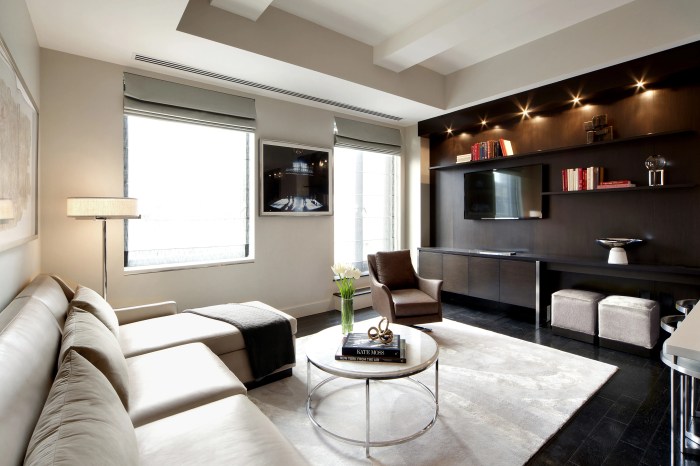
As we wrap up our discussion on house interiors, it's clear that a well-designed space can truly transform the way we experience our homes. By carefully considering elements like lighting, furniture choices, and overall style, you can create a personalized sanctuary that reflects your unique taste and personality.
Let your creativity soar as you embark on the exciting journey of crafting your dream living space.
FAQ Guide
How do house interiors impact mood?
House interiors can influence mood through factors like color choices, lighting, and overall layout. For example, warm colors like red and orange can create a cozy and inviting atmosphere, while natural light can boost mood and productivity.
What are some popular interior design styles?
Popular styles include modern, minimalist, traditional, and bohemian. Each style has its own unique characteristics and features, catering to different preferences and aesthetics.
How can I maximize space in small house interiors?
Maximizing space in small interiors can be achieved through smart storage solutions like multifunctional furniture, utilizing vertical space, and decluttering regularly to create a sense of openness.
Why is lighting important in interior design?
Lighting plays a crucial role in enhancing the overall ambiance of house interiors. It can highlight architectural features, create a sense of warmth, and even influence the perceived size of a space.

